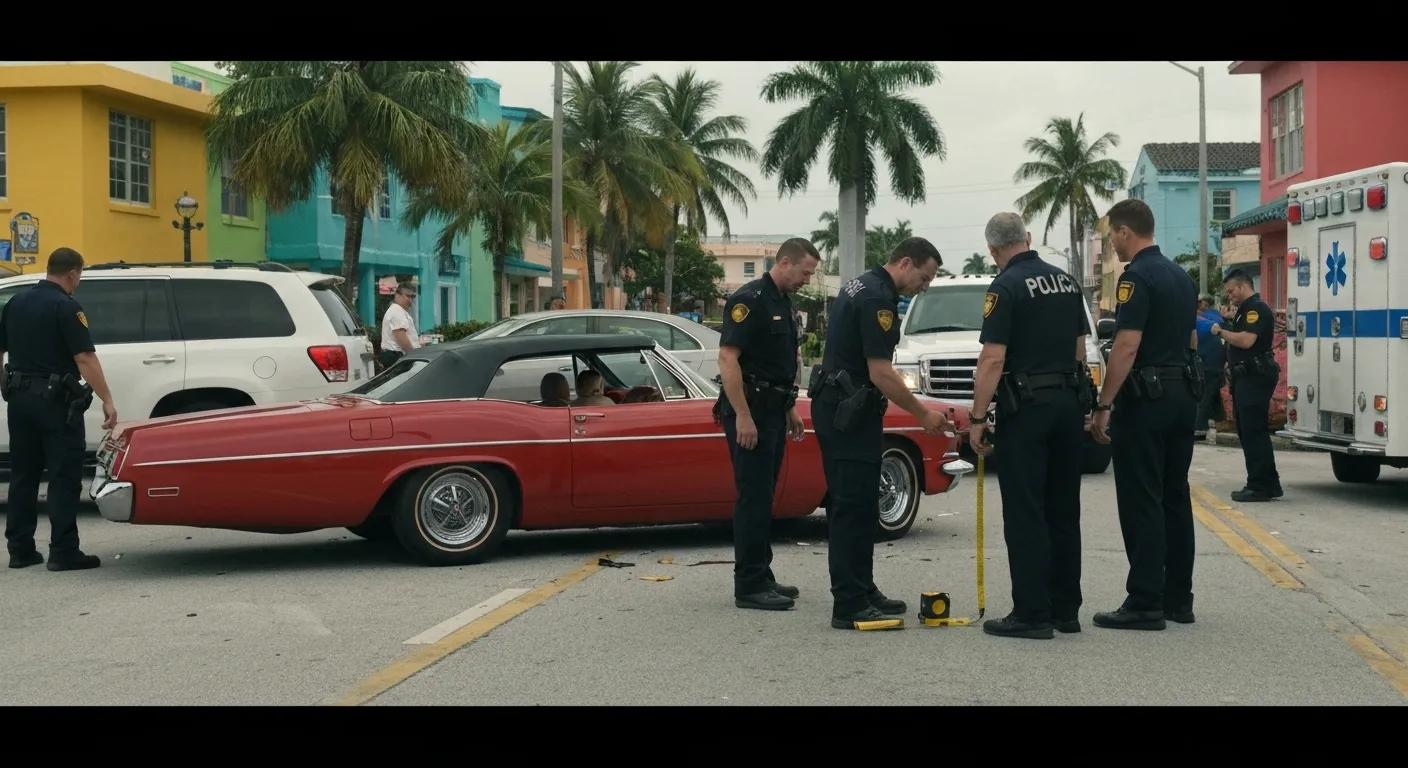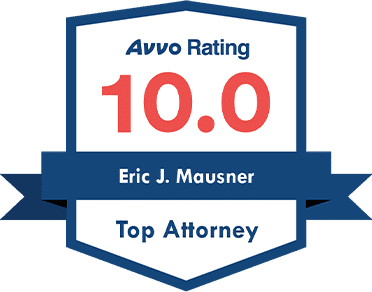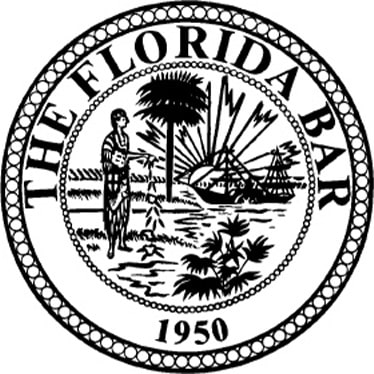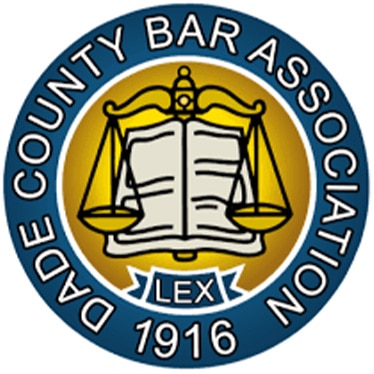Vehicle collisions in Miami-Dade County occur at an alarming rate, over 1,080 crashes every day, making on-scene evidence collection a critical first step toward securing full compensation. At Mausner Graham Injury Law, we understand how overwhelming the aftermath can be, which is why our team moves fast to preserve evidence and protect your rights. Proper car accident evidence gathering strategies empower you to document fault, quantify damages, and comply with Florida’s no-fault system under PIP rules. In this guide, you will learn:
- Immediate scene actions to secure safety, exchange information, and preserve physical evidence
- Steps for filing a police report and notifying insurers without jeopardizing your claim
- How medical records and prompt treatment under Florida’s 14-day PIP deadline build an irrefutable injury record
- Financial documentation – lost wages, property damage estimates, out-of-pocket costs that underpin your compensation demand
- The role of a Miami car accident attorney in collecting, preserving, and leveraging evidence
- Miami-specific tactics: local police procedures, traffic patterns, pre-accident checklists, and multimedia guides
- Answers to common evidence questions, from proving negligence to timing your attorney consultation
Implementing these strategies immediately after a crash lays the semantic and legal foundation for maximum recovery and a free consultation with our experienced Miami injury lawyers.
Florida’s No-Fault Insurance System
Florida’s no-fault insurance system, also known as Personal Injury Protection (PIP), requires drivers to carry insurance that covers their own medical expenses and lost wages up to a certain limit, regardless of who is at fault in an accident. This system aims to provide quicker access to benefits after a crash.
This information is relevant to the article as it explains the state’s insurance system, which is a key aspect of car accident claims in Miami.
What Immediate Steps Should You Take at the Miami Car Accident Scene?
Immediate on-scene actions are first-response steps you take the moment your vehicles stop moving, designed to protect physical safety, document critical details, and preserve evidence for fault and damages. By acting decisively, you set the stage for a robust personal injury claim and secure priority access to free consultations with dedicated Miami attorneys.
How Do You Secure the Scene and Ensure Safety After a Miami Car Crash?
Activate your hazard lights and call 911 to dispatch police and medical responders immediately after the collision. Clearing vehicles from active lanes and positioning warning devices reduces secondary crashes and protects witnesses.
- Turn on hazard signals and emergency flashers.
- Dial 911 to report injuries, hazards, and request law enforcement.
- Place reflective triangles or cones at least 10 feet behind each vehicle.
- Move vehicles to the shoulder if they are drivable and safe to relocate.
Securing the scene prevents further injury and preserves the exact crash location for photographs and official measurements.
What Information Should You Exchange with Other Drivers?
Exchanging accurate driver and vehicle details creates a verifiable record for insurers and courts, preventing disputes over identity, coverage, and fault. Always confirm information matches official documents.
- Full name, driver’s license number, and phone or email contact
- License plate number, vehicle make/model, and VIN if visible
- Insurance company name and policy number
- Description of vehicle owner (if different from driver)
Collecting complete contact and insurance details ensures you have the data needed to support your claim and avoid later confusion.
How Do You Properly Document the Accident Scene with Photos and Videos?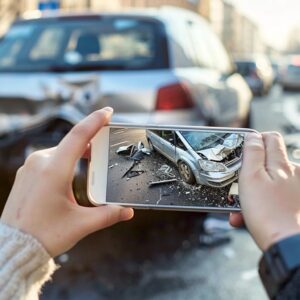
Capturing high-resolution images and clear video footage immediately after the crash records physical evidence that cannot be recreated later. Multimedia documentation preserves weather conditions, traffic flow, and damage patterns.
Begin with wide-angle shots of the entire scene, then move closer for detailed views of each vehicle, road markings, and environmental hazards. Record continuous video while narrating key details—directions of travel, skid marks, and obstructing objects.
What Angles and Details Are Crucial When Photographing the Scene?
A structured set of viewpoints ensures comprehensive coverage of spatial relationships and impact evidence.
- Overview angle from each vehicle corner showing full scene context.
- Mid-range angle capturing vehicle positions relative to road features.
- Close-up angle on damage points, skid marks, and license plates.
Capturing multiple perspectives reduces the risk of missing contributing factors such as road signage or environmental hazards.
Which Specific Items Should You Capture: Vehicle Damage, Road Conditions, and Injuries?
Before moving to witness statements, photograph every element that proves liability and quantifies harm.
Entity | Attribute | Value |
Vehicle Damage | Impact Zone | Dents, paint transfer, broken lights |
Road Conditions | Surface Details | Potholes, oil slicks, wet patches |
Injuries | Visible Wounds | Bruises, abrasions, swelling |
These images serve as objective proof of collision severity and underlying hazards, allowing attorneys to reconstruct fault scenarios.
How Do You Identify and Collect Eyewitness Information and Statements?
Eyewitness testimony offers independent corroboration of fault, traffic behaviors, and injury mechanisms. Prompt interviews prevent fading memories and conflicting accounts. Approach witnesses calmly and explain the importance of their observations.
What Questions Should You Ask Witnesses to Secure Credible Statements?
Asking targeted questions yields clear, focused statements that withstand scrutiny.
- “Can you describe what you saw just before impact?”
- “Where were you standing or sitting when the collision occurred?”
- “Did you notice any traffic signals, road signage, or obstructions?”
- “Approximately what time did the accident happen?”
How Do You Collect and Preserve Witness Contact Information?
Recording complete contact details ensures witnesses can be reached later for affidavits or depositions.
- Full legal name and preferred pronunciation
- Phone number and email address for follow-up
- Home or work address for formal statements
- Relationship to the incident (pedestrian, passenger, bystander)
Maintaining this data protects your claim from evidentiary gaps and supports attorney-led interviews
Get Your FREE Case Review Today
Why Is Filing an Official Police Report Critical for Miami Car Accident Claims?
An official police report constitutes a legal record compiled by trained officers at the scene, encompassing accident diagrams, citations, witness accounts, and damage assessments. This authoritative document anchors your injury claim by establishing time, location, and preliminary fault indicators recognized by insurers and courts.
How Do You File a Police Report in Miami and Obtain the Report Number?
Contacting law enforcement establishes the report’s chain of custody and ensures accuracy.
- Dial 911 or non-emergency Miami-Dade Police Communications Center.
- Provide incident details: exact address, number of vehicles, injuries.
- Request the officer’s name, badge number, and incident/case number.
- Note the report number and filing officer, then request a copy online via Florida Highway Safety and Motor Vehicles (FLHSMV).
Securing this report number early prevents delays when your attorney requests a certified copy for liability determination.
How Does the Police Report Help Prove Fault and Liability in Florida’s No-Fault System?
While Florida’s PIP coverage pays your initial medical bills regardless of fault, proving liability unlocks claims for pain and suffering beyond PIP limits. A detailed police narrative identifies citations, traffic violations, and weather conditions that influenced fault determination.
- Officer’s assignment of citations (speeding, failure to yield)
- Official diagram of vehicle positions and impact points
- Recorded witness statements bound by oath
- Notation of contributing factors such as impaired driving or road defects
This structured evidence supports your attorney’s efforts to assign precise liability percentages and maximize compensation.
What Are the Best Practices When Notifying Your Insurance Company?
Timely, factual notification protects your right to full coverage without admission of liability. Reporting within 24-48 hours satisfies policy requirements and preserves critical PIP benefits.
- Provide basic details: date, time, location, involved parties
- Share the police report number and filing agency
- Avoid speculative statements about fault or injury severity
- Keep notes on claim numbers, adjuster names, and call logs
Documenting every communication creates a secure audit trail and prevents claim denials for late reporting.
What Should You Say and Avoid When Reporting to Insurers?
When speaking to your insurer, remain factual and concise to avoid unintentional admissions.
- State only verifiable facts: “My vehicle was struck on NW 36th Street at 3:15 PM.”
- Provide the official police report number.
- Describe immediate visible damage and injuries without exaggeration.
- Do not apologize or speculate about who was at fault.
- Avoid summarizing medical symptoms beyond “neck pain” or “back stiffness.”
This focused communication aligns with policy obligations and limits insurer defenses.
How Important Are Medical Records and Prompt Treatment for Your Miami Car Accident Case?
Medical records are objective documents created by healthcare professionals that link your injuries directly to the crash, establishing causation and quantifying treatment needs. Under Florida’s 14-day PIP rule, seeking immediate care not only safeguards your health but secures coverage for injury-related expenses.
Importance of Medical Records in Injury Claims
Medical records are crucial in personal injury cases as they provide objective evidence linking injuries to the accident. These records document the nature, extent, and prognosis of injuries, which is essential for establishing causation and quantifying damages in a claim.
This citation supports the article’s emphasis on the importance of medical documentation in building a strong case for compensation.
Why Must You Seek Medical Attention Quickly Under Florida’s 14-Day PIP Rule?
Florida law requires PIP benefits to cover allowable medical expenses only if treatment begins within 14 days of the collision. Immediate care prevents insurers from disputing injury origins and ensures continuity in your medical narrative.
- Satisfies statutory deadline for PIP claims
- Documents acute symptoms before they subside or evolve
- Provides early imaging (X-rays, MRIs) that link injuries to the crash
- Establishes an unbroken chain of treatment records
Prompt treatment lays the medical groundwork that your attorney will use to argue for full compensation.
How Do Medical Records Document Injuries and Support Your Personal Injury Claim?
Physician notes, diagnostic results, and therapy summaries detail the nature, extent, and prognosis of each injury. These records tie your treatment directly to the accident.
- Emergency room intake forms with initial complaints
- Radiology reports identifying fractures, soft-tissue damage
- Physical therapy progress notes with functional limitations
- Specialist evaluations (orthopedists, neurologists)
Comprehensive medical documentation convinces insurers and juries that your injuries merit full economic and non-economic damages.
What Medical Bills, Receipts, and Treatment Documentation Should You Keep?
Maintaining organized expense records ensures every dollar spent is recoverable in your claim.
- Hospital invoices and itemized billing statements
- Receipts for prescription medications and durable medical equipment
- Invoices for ambulance transport and imaging services
- Therapy session receipts and chiropractic treatment bills
Accurate financial records allow your attorney to calculate economic losses and demand fair reimbursement.
How Do You Track Ongoing Care and Prognosis for Your Injury Claim?
Tracking long-term treatment details and projected recovery outcomes strengthens injury valuation.
Entity | Attribute | Value |
Physical Therapy | Session Notes | Mobility improvements vs. limitations |
Specialist Consultations | Diagnostic Reports | Test results and treatment plans |
Prescription Medications | Dosage Records | Medication schedules and adjustments |
Maintaining these records supports future claims for ongoing care, rehabilitation, and projected loss of earning capacity.
What Financial and Other Supporting Evidence Should You Collect After a Miami Car Accident?
Beyond medical and police documentation, compiling economic and out-of-pocket expenses paints a full picture of financial harm, strengthening your demand for compensation.
How Do You Document Lost Wages and Income Loss Due to the Accident?
Lost wage claims require proof of pre-accident earnings and employer verification of missed time.
- Obtain pay stubs or direct deposit records for the three months prior to the crash.
- Request a written statement from your employer confirming days missed and wage rate.
- Retain tax returns showing average income when self-employed or freelance.
These records quantify earnings lost during recovery, forming a core component of economic damages.
How Do You Obtain and Use Property Damage Estimates for Your Claim?
Accurate repair cost estimates validate your property damage claim and prevent lowball offers.
- Take your vehicle to certified body shops for written estimates.
- Compare at least two independent appraisals for market-rate accuracy.
- Photograph the repair estimate documents for your file.
Providing multiple, professional estimates ensures insurance adjusters compensate you fairly for vehicle restoration.
What Other Out-of-Pocket Expenses Should You Track and Save Receipts For?
Recoverable incidental costs extend beyond medical and repair bills, reflecting the true burden of your accident.
- Rental car charges while your vehicle is in the shop
- Towing and impound fees for emergency removal
- Childcare costs if injuries interfere with parenting duties
- Travel expenses for medical appointments
Documenting these expenses allows your attorney to add them to your compensation package.
How Does a Miami Car Accident Attorney Assist in Collecting and Using Evidence?
Engaging an experienced Miami attorney amplifies every piece of evidence, transforming raw data into compelling legal arguments and maximizing your compensation potential. When you work with MG Injury Law, you’re not just hiring a lawyer — you’re getting a former prosecutor-led team that knows how to build airtight cases.
How Do Attorneys Help Gather and Preserve Crucial Evidence?
Attorneys deploy specialized tactics to secure and authenticate evidence that individuals often cannot obtain alone.
- Issue subpoenas for surveillance footage and phone records
- Retain accident reconstruction experts to model impact scenarios
- Coordinate with medical specialists to obtain detailed treatment analyses
- Preserve digital evidence such as GPS data, traffic camera footage
These professional services strengthen your claim and prevent loss or tampering of vital proof.
How Is Evidence Leveraged to Maximize Compensation Through Negotiation and Litigation?
Skilled attorneys frame evidence to highlight liability and quantify damages, guiding both settlement talks and courtroom strategies.
Entity | Attribute | Value |
Negotiation | Strategy | Demand letter supported by police report and photos |
Litigation | Tactics | Expert witness testimony on causation and severity |
Settlement | Outcome | Compensation amount reflecting documented losses |
Presenting organized, credible evidence raises the pressure on insurers to settle fairly and prepares you for trial if needed.
What Is Florida’s Comparative Negligence Rule and How Does Evidence Affect It?
Florida reduces your recovery in proportion to your percentage of fault under comparative negligence. Strong evidence can shift blame and minimize your assigned fault.
- Clear photos of skid marks showing the other driver’s erratic maneuvers
- Witness statements confirming right-of-way violations
- Officer’s citations indicating primary fault
Every piece of evidence that proves the other party’s negligence reduces your share of liability and increases your net compensation.
Contact us today for your free & confidential case review. Our team will help you get the compensation that you deserve.
What Are the Most Effective Car Accident Evidence Gathering Strategies Specific to Miami?
Miami’s unique traffic patterns, local police procedures, and dense urban environment demand tailored evidence-collection approaches for optimal claim outcomes.
How Do Miami’s Local Police Departments and Traffic Patterns Affect Evidence Collection?
Different Miami precincts may document accidents with varying detail levels, and heavy traffic corridors require extra scene coverage.
- Miami-Dade police often include GPS coordinates in reports, note them for mapping reconstruction.
- Expressway crashes on I-95 and SR-826 demand wide-angle overhead shots due to multi-lane complexity.
- Local officers may issue citations for common violations like red-light running at high-accident intersections.
Understanding these patterns ensures you capture all relevant data for each precinct’s reporting style.
What Tools and Checklists Should You Have Ready in Your Car for Immediate Evidence Collection?
A pre-assembled evidence kit turns stressful moments into systematic data gathering, preserving critical proof from the start.
- Smartphone with charger and extra battery pack
- Small notepad, pen, and pre-printed witness information cards
- Reflective triangles or flares for scene safety
- Digital camera or dashcam with timestamp capability
- Measuring tape for skid marks and distances
Having these tools on hand reduces response time and ensures you collect every detail before scene clearance.
How Can Visual Guides and Videos Improve Your Accident Scene Documentation?
Step-by-step visual aids transform complex procedures into easy-to-follow actions, reducing errors under stress.
- Infographic checklists illustrating angle positions and photo sequences
- Short video tutorials on using smartphone settings for high-resolution captures
- Time-lapse recordings showing scene progression before cleanup
Visual guides streamline evidence collection, helping you cover each critical item quickly and accurately.
What Common Questions Do Miami Car Accident Victims Have About Evidence and Claims?
Addressing frequent concerns ensures you understand which evidence matters most and when to enlist professional help for the best outcome.
What Types of Evidence Are Most Valuable in a Florida Car Accident Case?
Certain evidence categories consistently influence claim value and liability determination.
- Official police report with citations and diagram
- Photographs and videos of damage, road conditions, and injuries
- Verified medical records linking treatment to the crash
- Eyewitness statements confirming fault and sequence of events
- Property damage and repair cost estimates
Compiling these elements creates an airtight claim package for insurers and juries.
How Do You Prove Negligence Using Collected Evidence in Miami?
Negligence requires proving duty, breach, causation, and damages; evidence addresses each element directly.
- Duty: State traffic laws and right-of-way rules
- Breach: Police citations, witness accounts, and video recordings
- Causation: Medical records correlating injuries to crash forces
- Damages: Repair estimates, medical bills, and wage loss documentation
Integrating these pieces demonstrates clear legal fault and supports your full damage recovery.
How Long Should You Keep Medical and Financial Records After an Accident?
Retain all records for at least five years or until final claim resolution, whichever is longer, to comply with the statute of limitations and audit requests. Continuing to store bills, treatment notes, and tax returns ensures your attorney can reference any document needed for appeals or late-emerging complications.
When Should You Contact a Miami Car Accident Lawyer for Evidence Assistance?
You should reach out as soon as possible, ideally within days of the collision, to preserve perishable evidence and comply with Florida’s two-year statute of limitations. Early engagement secures prompt expert involvement: evidence preservation, witness interviews, and strategic guidance increase your chances of maximum compensation.
Thorough evidence collection combined with skilled legal representation is essential to unlock the full value of your Miami car accident claim. Our firm offers free consultations to evaluate your case and guide you through each step, from on-scene documentation to courtroom advocacy, ensuring you receive every dollar you deserve. If you’ve been injured in a car accident, the attorneys at Mausner Graham Injury Law have been helping injured victims throughout Florida help recover the compensation they deserve.
Contact us today to protect your rights and start building an unbeatable case.
Call Mausner Graham today
Free consultation available statewide
Offices in Miami, Doral, and Palmetto Bay
600+ 5-Star Google Reviews
Last Updated Monday, August 18th, 2025

